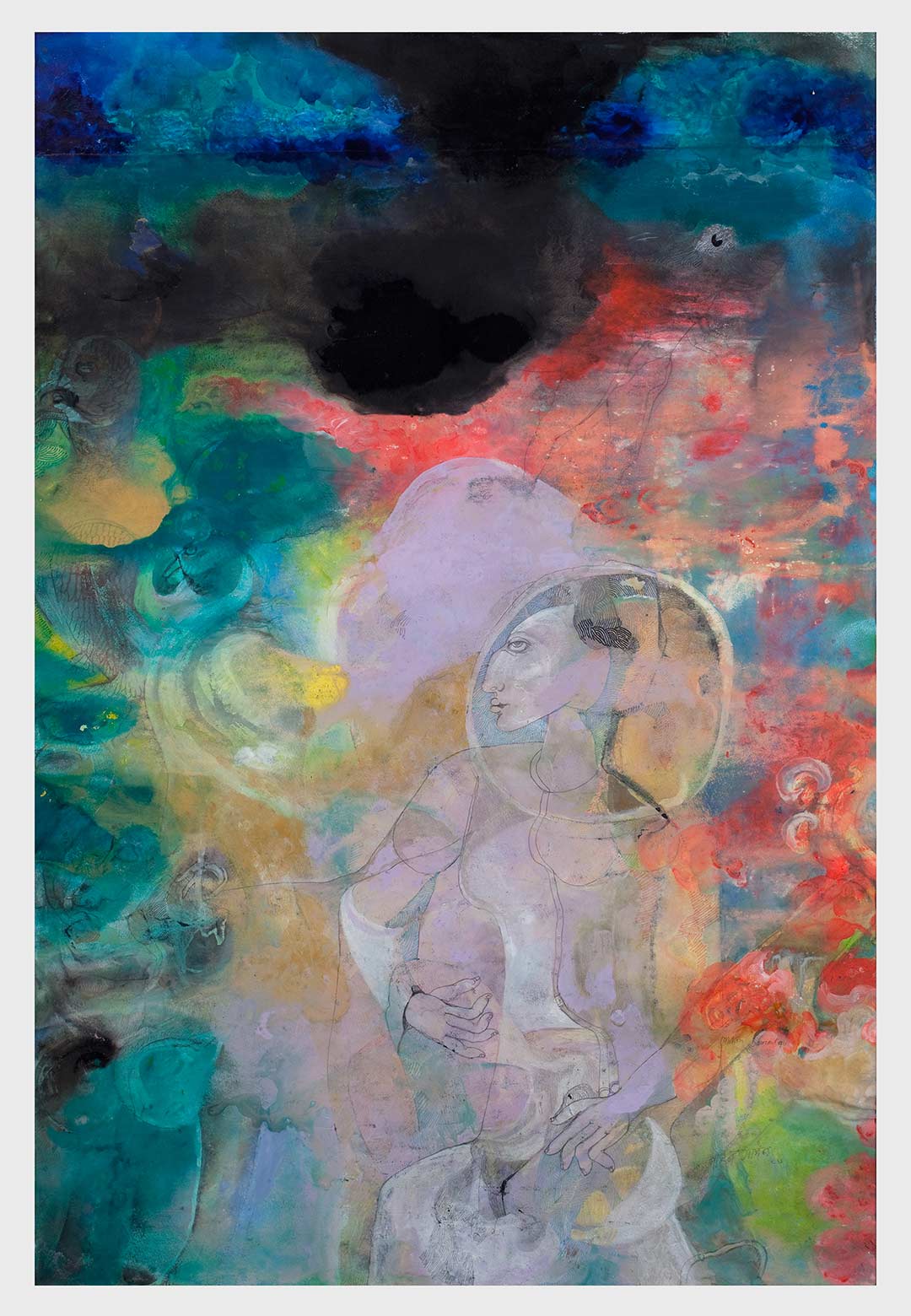Aicon gallery is hosting a retrospective of the late Mohan Samant (1924 - 2004), in an exhibition titled Archaeologist at the Ancient City from August 15 - September 21, 2024.The art gallery in New York, United States, traces the early Indian modernist painter’s dynamic career from the 1960s through 2003, showcasing his richly textured surfaces from the 1960s and 70s, three-dimensional paper cut-outs from 1975, intricately hand-bent wire figures and cut niches of the 1980s, and, ultimately, the masterful fusion of these techniques in the 1990s and 2000s.
Born into a middle-class family in a suburb of Mumbai, India, Mohan (Manmohan) Balkrishna Samant was trained as an Indian classical musician and enrolled at the Sir J.J. School of Art from 1947. That year, several students founded the renowned Progressive Artists’ Group (PAG), a collective that challenged the Bengal school's nationalism and advocated for an Indian avant-garde. Samant joined PAG in 1952, the year he earned his diploma, and participated in the group's final exhibition in 1953, alongside modern masters such as V. S. Gaitonde, M. F. Husain and Krishen Khanna.
The 1970s and 80s were crucial for Samant’s exploration of new mediums. By 1975, he began integrating paper cut-outs—he would paint and draw with watercolour and felt-tip markers on paper, then cut out the shapes to create three-dimensional scenes, which he glued to painted supports and mounted on canvas. The results resembled miniature theatre stages, reflecting his fascination with Andhra Pradesh’s leather-puppet theatre and Indonesia’s wayang (shadow puppets). Both the featured work of this art exhibition and Killing of the Mythical Bird (1980) exemplify Samant’s innovative cut-out technique.
The development of the technique of using heavily textured surfaces facilitated the use of wire forms and recessed panels in the Indian artist’s paintings. This also comes after incorporating materials such as sand in his work, as witnessed in the rough edges of Untitled c. 1963. Mexican Wine Party (1982) is an early example of his wire drawings, which demonstrate how the wire figures help link seemingly unrelated areas of the canvases through a juxtaposition of colours, or colour-blocking. This painting also alludes to his inspiration found in Basohli and Jain miniatures and the Buddhist murals of Ajanta caves, which can be seen in the rest of his work.
From 1987, Samant focused on converting the toy figurines he had created with bent wires from friezes to niches carved into the canvas. Mrutya Smruti: Dance for the Ancestors (1987) depicts this in great detail. The technique was put to especially clever use here since the painting effectively portrays the eeriness of an ancient burial ground with several exhumed skeletons strewn across.
Archaeologist at the Ancient City features his paper-based pieces for a broader view of Samant’s work. After a heart attack in 1974 limited his ability to work on large canvases, he focused more on watercolours, adding texture with felt-tip markers and cut-paper appliqués. His innovative approach to watercolour continued in the 1990s, as seen in works like The Gossipers (1998), which blend delicate washes with bold paint and marker details.
Many of the themes explored and techniques mastered by the artist came together in a vast and vibrant canvas titled Archaeologist at the Ancient City (2003), the show's namesake. From colour-filled backdrops, watercolour paper cut-outs and textured surfaces to delicate line figures, this painting references Indian art history and allegories. The transcultural artist is known for often combining elements from Hindu temples, Egyptian hieroglyphs and pre-Colombian ceramics.






 Sign in with email
Sign in with email










What do you think?